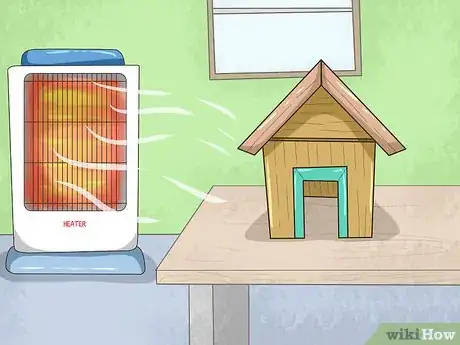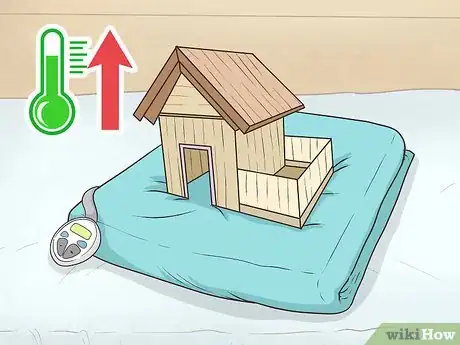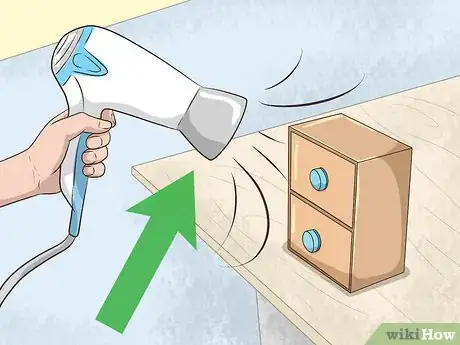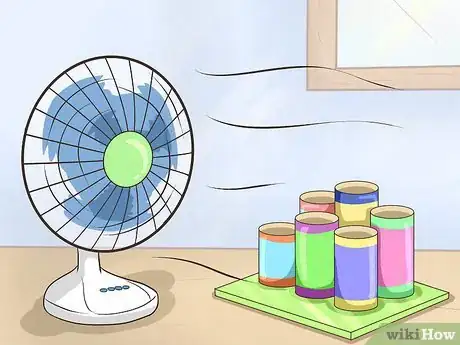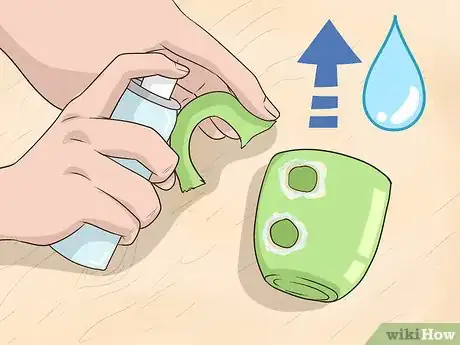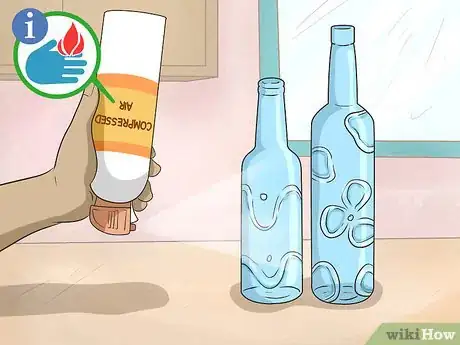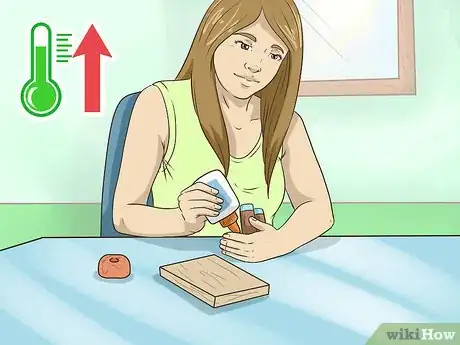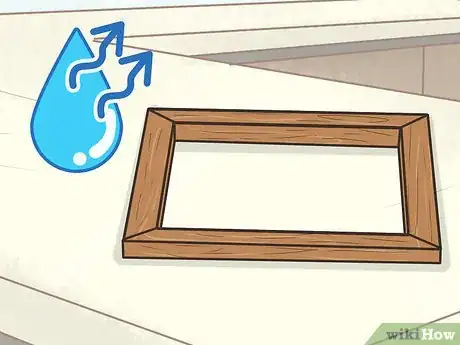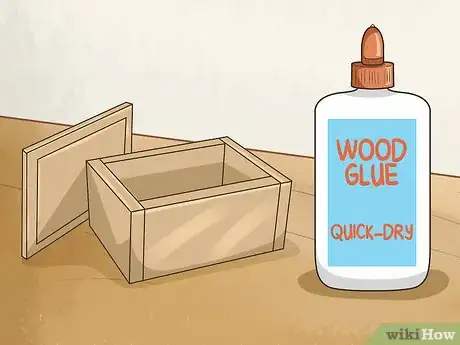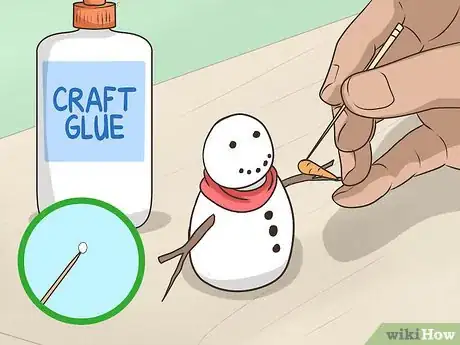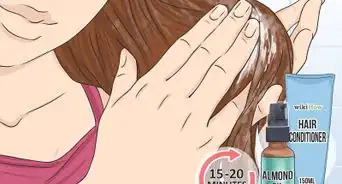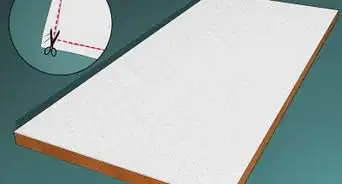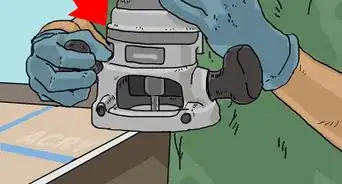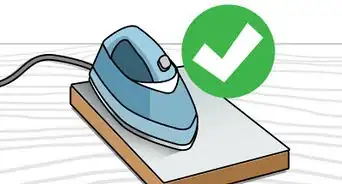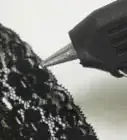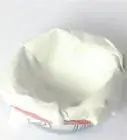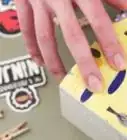This article was co-authored by Amy Guerrero. Amy Guerrero is an Arts and Crafts Specialist and the Owner of Sunshine Craft Co., a crafting studio based in Phoenix, Arizona. Amy specializes in macrame, DIY crafting, and teaching fiber arts. She offers monthly in-person and online workshops along with having developed a range of DIY craft kits for at-home projects. Amy holds a BS in Industrial Design from Philadelphia University. She worked as a graphic designer before starting her own business. Sunshine Craft Co. is a creative hub that offers a wide range of workshops, tools, and resources for any craft project to inspire creativity and community engagement.
There are 8 references cited in this article, which can be found at the bottom of the page.
This article has been viewed 86,717 times.
When you want to get a project completed, waiting for the glue to dry can be frustrating and time-consuming. Different kinds of glue have different drying times, so some types of glue naturally cure more quickly than others. Generally, heat is the preferred method for getting glue to dry quickly. However, you can also use fans, accelerator products, or compressed air. When applying the glue, make sure that the surface is dry and try to use the smallest amount possible so that it can dry faster.
Steps
Using Heat
-
1Leave your project in the sun to dry large areas of glue. Pick a sunny spot in either your home or garden. Place your project in the sun for several hours until the glue is dry.[1]
- This method is ideal as you don’t have to monitor the process and you can even leave your project out overnight if you prefer.
- If you are going to be drying the glue in a sunny spot indoors, either pick a well-ventilated area or open some windows to help speed up the process even more.
-
2Use a heater to increase the room temperature. Place your project in the same room as a heater. Turn the heater on and set it to a warm, comfortable temperature. Shut any doors and windows in the room if possible to keep the heat contained in the room so that the glue can dry faster.[2]
- Using a heater is best for cooler, winter months, as the extra heat may feel as though it’s too much during warmer temperatures.
- This method is ideal if your project is taking too long to dry in the sun.
Advertisement -
3Use an electric blanket to speed up the curing process. Lay an electric blanket flat on the ground. Switch it on, place your project on top, and leave it resting there until the glue has cured.
- Alternatively, you can cover your project with an electric blanket if it’s easier.
- It’s best to use an old electric blanket if possible in case any glue sticks to it. If you are going to be using an electric blanket for this purpose regularly, it may be best to purchase a secondhand one.
-
4Use a hairdryer to help small areas of glue dry. Hold the hairdryer approximately 12 in (30 cm) away from the surface for 2-3 minutes. Make sure that the air flow is directed at the glue.[3]
- Don’t use the hairdryer to dry the glue for extended periods of time as the excess heat could damage your project. Keep a close eye on it at all times.
Using Fans and Products
-
1Use a fan to keep the area well-ventilated. Many types of glue cure with air exposure. This means that the more air that the glue is exposed to, the faster that it will dry. Set up and turn on 1-2 fans around the surface that you are drying. Make sure that the fans are pointing towards the glue.[4]
-
2Apply an accelerator product if you are using super glue. Accelerators are designed to speed up the time that it takes for the glue to cure. Hold the spray bottle approximately 1 foot (30 cm) away from the super glue that you have applied. Then dispense the accelerator sparingly over the super glue, making sure that the coat is even.[5]
- Avoid applying too much accelerator, as this can make the surface turn white. This is a cosmetic problem called blooming.
- The accelerator will cause the super glue to turn solid after only a few minutes.[6]
-
3Dry hot glue instantly using compressed air. Turn the can of compressed air upside down. Spray the compressed air over the hot glue that you have just applied. The compressed air chills the glue and causes it to dry in just a few seconds.[7]
- Be very careful when you are using compressed air, as it can burn your skin on contact.
Applying Glue Effectively
-
1Work in a warm environment with low humidity if possible. Glue cures the fastest when the temperature is high and the amount of moisture in the air is low. If you can pick a day to work with glue, try to choose a warm, sunny day with low humidity.[8]
- A cooler temperature or higher humidity will slow down the drying time of all types of glue.
-
2Make sure that the surface is dry before you apply the glue. Wipe down the surface to remove any excess water before you begin applying the glue.[9] If you are working with a damp, porous surface such as wood, let it air-dry for 2-3 days first in a well-ventilated area until it is dry to touch.[10]
- It will take much longer for the glue to dry if it is applied to a wet surface and it may not cure properly at all.
-
3Choose a quick-dry glue if possible. Quick-dry adhesives are designed to cure faster than standard types of glue. Check if there is a quick-dry option for the type of glue that you need. Fast-setting types are generally available for wood and super glues.[11]
-
4Use the smallest amount of glue that you need. Follow the directions on the label of the glue closely and only use as much as is directed. For many types of glue, 1 drop spread out over 1 in2 (6.5 cm2) is enough. Use a thin piece of plastic or a toothpick to spread out or remove some glue if necessary.[12] [13]
- If you have used too much glue, it will take much longer to dry. The thinner the layer of glue, the more quickly it will dry.
Community Q&A
-
QuestionHow long does it take school glue to dry?
 wikiHow Staff EditorThis answer was written by one of our trained team of researchers who validated it for accuracy and comprehensiveness.
wikiHow Staff EditorThis answer was written by one of our trained team of researchers who validated it for accuracy and comprehensiveness.
Staff Answer wikiHow Staff EditorStaff AnswerSchool glue is a type of white craft glue. It depends on how much you use, but this type of glue typically sets in about an hour, and fully hardens in 24 hours.
wikiHow Staff EditorStaff AnswerSchool glue is a type of white craft glue. It depends on how much you use, but this type of glue typically sets in about an hour, and fully hardens in 24 hours. -
QuestionDoes glue dry faster in the freezer?
 wikiHow Staff EditorThis answer was written by one of our trained team of researchers who validated it for accuracy and comprehensiveness.
wikiHow Staff EditorThis answer was written by one of our trained team of researchers who validated it for accuracy and comprehensiveness.
Staff Answer wikiHow Staff EditorStaff AnswerIt depends on the type of glue. Some types, such as polyurethane glues, actually dry faster if you heat them. Hot glues harden quickly as they cool, so putting them in a freezer or blasting them with compressed air could speed up the process. However, they usually harden very quickly even without the extra help.
wikiHow Staff EditorStaff AnswerIt depends on the type of glue. Some types, such as polyurethane glues, actually dry faster if you heat them. Hot glues harden quickly as they cool, so putting them in a freezer or blasting them with compressed air could speed up the process. However, they usually harden very quickly even without the extra help. -
QuestionHow do you make glitter glue dry faster?
 wikiHow Staff EditorThis answer was written by one of our trained team of researchers who validated it for accuracy and comprehensiveness.
wikiHow Staff EditorThis answer was written by one of our trained team of researchers who validated it for accuracy and comprehensiveness.
Staff Answer wikiHow Staff EditorStaff AnswerGoing over it with a hair dryer on medium heat can help it set more quickly. You can also try setting it in a sunny spot to speed the process up a little bit.
wikiHow Staff EditorStaff AnswerGoing over it with a hair dryer on medium heat can help it set more quickly. You can also try setting it in a sunny spot to speed the process up a little bit.
Warnings
- Always follow the directions on the label of the glue. This will give you directions on how to dry the glue properly and the most accurate drying times.⧼thumbs_response⧽
Things You’ll Need
Using Heat
- Heater
- Electric blanket
- Hairdryer
Using Fans and Products
- Fan
- Accelerator products
- Compressed air
Applying the Glue
- Cloth
- Quick-dry glue
- Thin piece of plastic or a toothpick
References
- ↑ https://www.thegeminigeek.com/how-to-make-glue-dry-faster/
- ↑ https://www.thegeminigeek.com/how-to-make-glue-dry-faster/
- ↑ https://www.popularmechanics.com/cars/how-to/a87/1272426/
- ↑ Amy Guerrero. Arts & Crafts Specialist. Expert Interview. 28 April 2021.
- ↑ https://canadianwoodworking.com/techniques_and_tips/finishing-with-ca-glue/
- ↑ https://www.popularmechanics.com/cars/how-to/a87/1272426/
- ↑ https://makezine.com/2016/03/09/hot-glue/
- ↑ https://www.woodmagazine.com/materials-guide/adhesives/zimmerman
- ↑ Amy Guerrero. Arts & Crafts Specialist. Expert Interview. 28 April 2021.
- ↑ https://www.woodmagazine.com/materials-guide/adhesives/zimmerman
- ↑ https://www.consumerreports.org/cro/glues/buying-guide/index.htm
- ↑ Amy Guerrero. Arts & Crafts Specialist. Expert Interview. 28 April 2021.
- ↑ http://www.woodworkersjournal.com/cyanoacrylate-everything-you-need-to-know/
About This Article
If you want to speed up an arts or DIY project, you can make the glue dry faster with heat or cool air. If it’s a warm day, leave your project out in the sun for a few hours. Or, place it a few feet away from a fan instead. If it’s cold outside, place your project in the same room as a heater to benefit from the extra warmth. You can also use a hairdryer to help small amounts of glue dry. Just hold your hairdryer about 12 inches away from your item and keep it there for 2 or 3 minutes. To cool hot glue, hold a can of compressed air upside-down and spray it on the glue for a few seconds. For more tips, including how to make super glue dry faster, read on!

